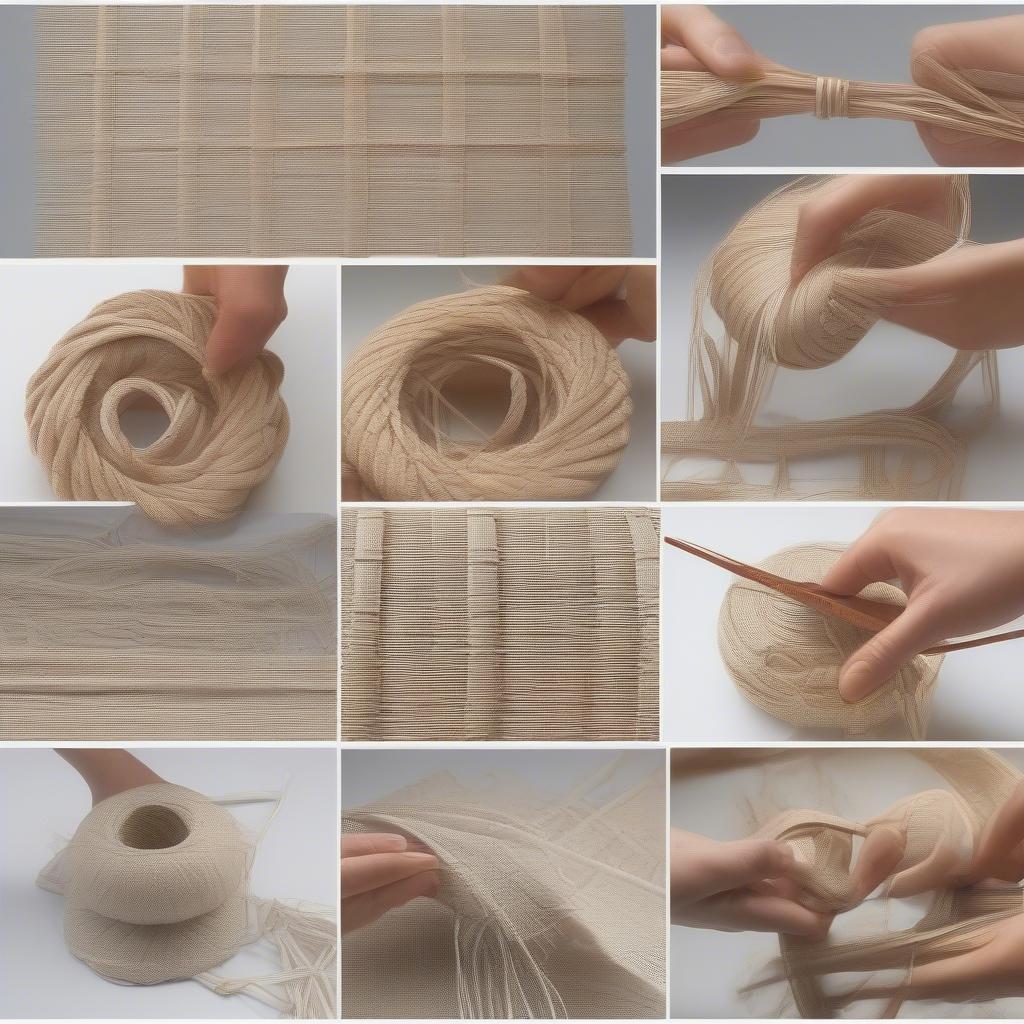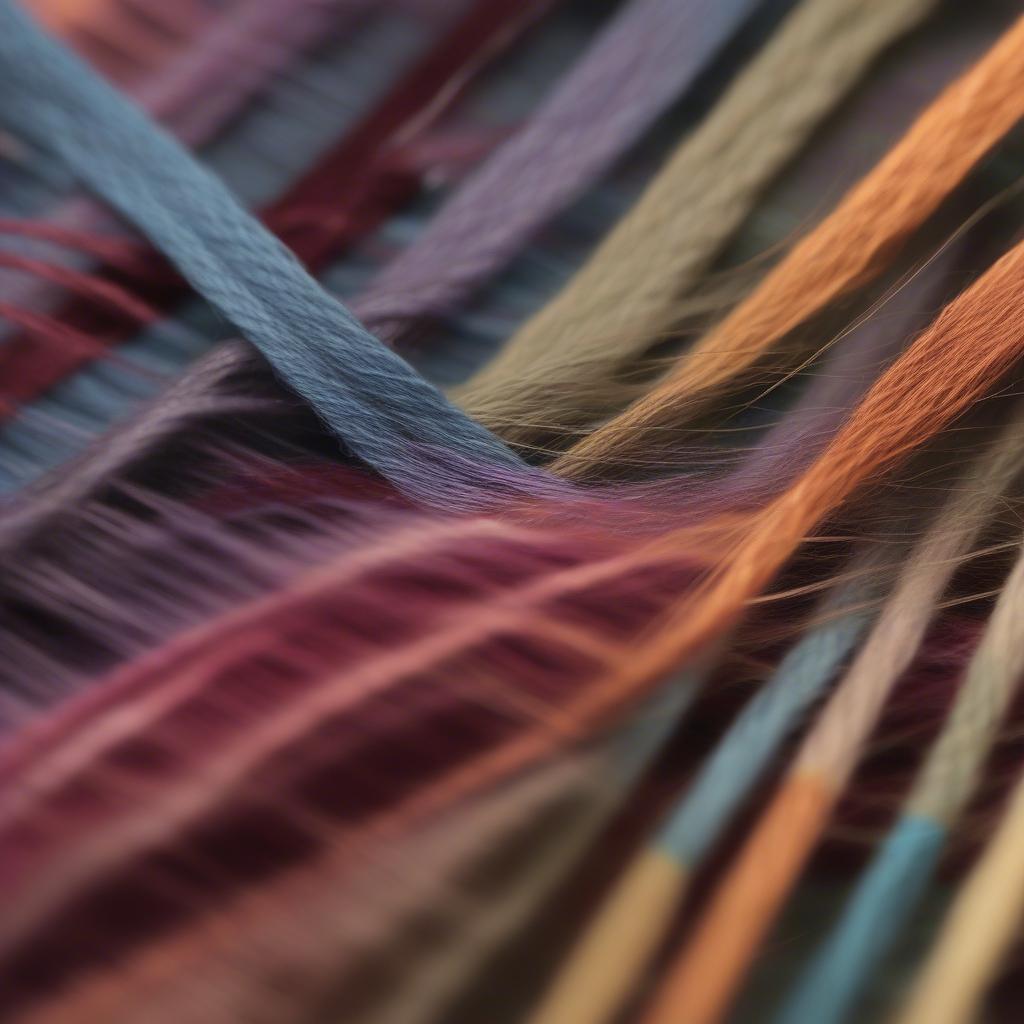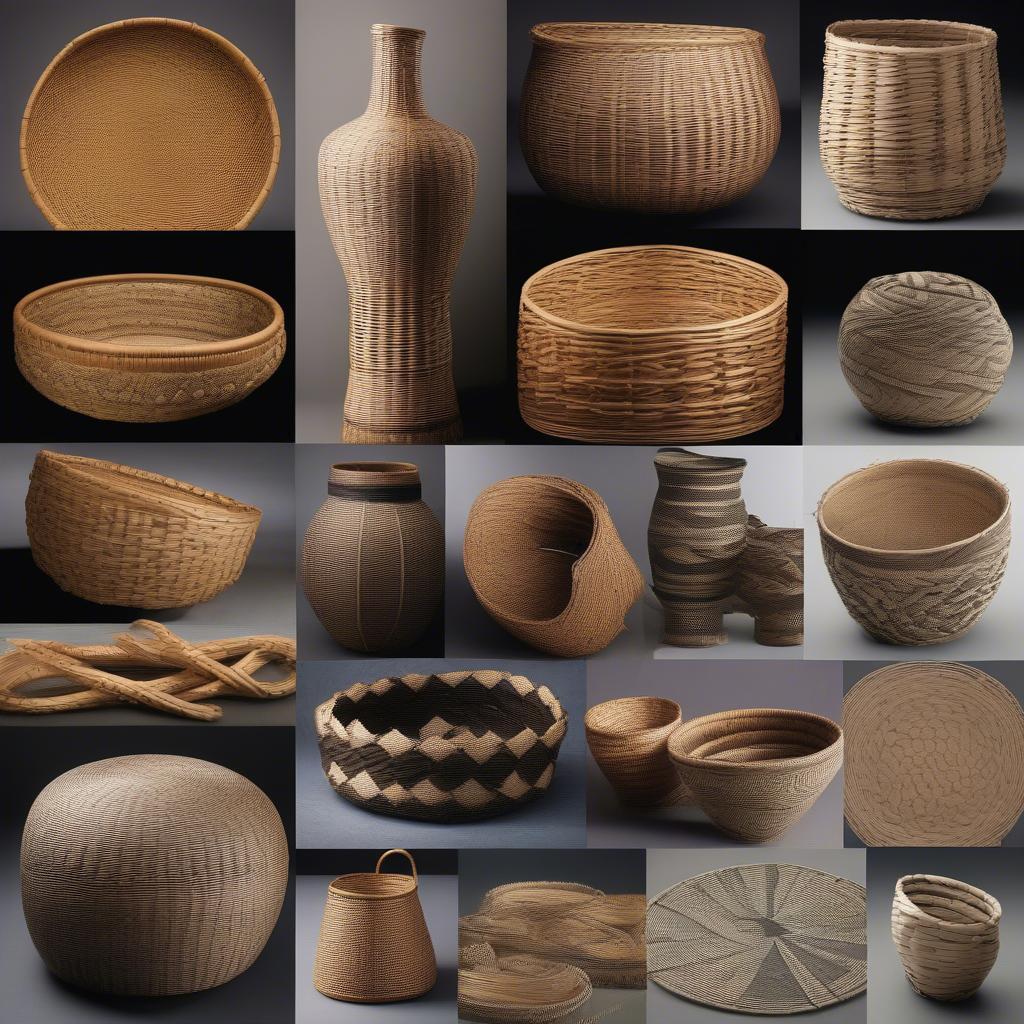Basket Weaving
Types of Basket Weaving Techniques
Basket weaving, an ancient craft, offers a surprising variety of techniques. From simple plaiting to intricate twining, understanding the different Types Of Basket Weaving Techniques opens up a world of possibilities for both appreciating and creating these beautiful, functional objects. This article will explore these diverse methods, shedding light on their history, process, and unique characteristics.
 Basic Basket Weaving Techniques: Plaiting, Twining, and Coiling
Basic Basket Weaving Techniques: Plaiting, Twining, and Coiling
Exploring the Core Types of Basket Weaving Techniques
There are three primary categories of basket weaving techniques: plaiting, twining, and coiling. Each method produces distinctive textures and patterns, reflecting the rich history and cultural influences of basketry worldwide. Let’s delve deeper into each of these core techniques.
Plaiting: The Foundation of Basket Weaving
Plaiting, perhaps the most recognizable type of basket weaving, is a simple over-under weaving method using flat materials like reeds, grasses, or palm leaves. Think of it as similar to braiding hair. This technique is often used for creating baskets with a checkerboard or twill pattern. Check out our article on how to weave a basket out of palm leaves for a detailed tutorial.
Twining: Adding Complexity and Artistry
Twining takes basket weaving a step further. This technique involves interweaving two or more flexible wefts around rigid warp elements. The wefts twist around each other as they encircle the warps, creating a strong and decorative structure. Twining allows for greater complexity in design and pattern, often incorporating intricate geometric motifs.
 Twining Basket Weaving Technique: A Close-Up View
Twining Basket Weaving Technique: A Close-Up View
Coiling: Building Upward with Strength and Precision
Coiling is a unique basket weaving technique that involves stitching a continuous foundation of material, often bundled grasses or rope, into a spiral shape. The stitching can be visible or concealed, adding another layer of design possibility. This technique creates sturdy and durable baskets, often used for utilitarian purposes. You might be interested in our post on basket weave embroidery, which explores decorative stitching techniques used in coiling.
“Coiling is particularly fascinating,” says renowned basket weaver, Anya Petrova, “because it allows for three-dimensional forms and intricate surface embellishments. It’s like sculpting with fiber.”
Beyond the Basics: Variations and Combinations
While plaiting, twining, and coiling are the fundamental types of basket weaving techniques, countless variations and combinations exist. These variations often reflect regional traditions and the availability of specific materials. For instance, wicker and rattan, with their flexibility and durability, lend themselves well to intricate twining techniques.
Exploring Regional Variations
From the tightly woven baskets of Rwanda to the colorful, patterned baskets of Native American tribes, each culture has developed unique basket weaving traditions. These traditions are often passed down through generations, preserving cultural heritage and artistic expression. Learn more about Rwandan basket weaving traditions on our website.
“Basket weaving is more than just a craft,” explains Dr. Elias Nkosi, an anthropologist specializing in African art. “It’s a living testament to cultural identity and ingenuity.”
 Diverse Basket Weaving Patterns and Designs
Diverse Basket Weaving Patterns and Designs
Choosing the Right Technique
Selecting the right basket weaving technique depends on the desired outcome, the materials available, and the weaver’s skill level. Beginners may find plaiting a good starting point, while experienced weavers can explore the complexities of twining and coiling.
Conclusion: A World of Woven Wonders
The types of basket weaving techniques are as diverse as the cultures that practice them. From the simplicity of plaiting to the intricacy of twining and the sturdy construction of coiling, each technique offers a unique approach to creating beautiful and functional objects. Exploring these different methods allows us to appreciate the artistry and skill involved in this ancient craft, connecting us to a rich history of human creativity. You might also enjoy learning about the Co Lab large brown purse with basket weaving on the front, showcasing a modern application of these techniques. Don’t forget to check out our page on basket weaving conventions 2017 for inspiration and community connections.
FAQ
-
What is the easiest basket weaving technique for beginners?
Plaiting is generally considered the easiest technique for beginners. -
What materials are commonly used in basket weaving?
Common materials include reeds, grasses, wicker, rattan, bamboo, and palm leaves. -
What is the difference between twining and coiling?
Twining involves interweaving wefts around warps, while coiling involves stitching a continuous foundation of material. -
How can I learn more about basket weaving techniques?
Numerous resources, including books, online tutorials, and workshops, are available to help you learn more. -
What are some examples of regional basket weaving variations?
Examples include the tightly woven baskets of Rwanda and the colorful patterns of Native American baskets. -
What is the significance of basket weaving in different cultures?
Basket weaving often represents cultural identity, artistic expression, and practical skills passed down through generations. -
Where can I find basket weaving supplies?
You can find basket weaving supplies at craft stores, online retailers, and specialty shops.
We encourage you to explore the fascinating world of basket weaving and discover the technique that speaks to you. For any assistance or further information, please contact us at Hanoi, Vietnam or Tech Avenue, Suite 12, San Francisco, CA 94105, USA. Our customer support team is available 24/7.
